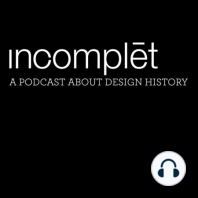17 min listen
Black Panther Newsletter
ratings:
Length:
27 minutes
Released:
Dec 1, 2022
Format:
Podcast episode
Description
The Black Panther Party for Self-Defense was founded in 1966 in Oakland, California by Huey P. Newton and Bobby Seale. The Black Panther Party was founded during the turbulent times of the sixties that saw many changes in America. Newton at first led the party with an ideology called their Ten Point Program, and with the idea that arming Black communities was essential for their protection and survival. Through community assistance programs and armed community patrols to prevent police brutality, the Black Panther Party sought to protect and uplift their communities, stepping in where the government had failed them. In order to promote their party’s ideals, generate revenue, and recruit new members, the Party began publishing the Black Panther newspaper. It grew from 4 pages to 32, adding color and better design under the direction of Emory Douglas who was the Black Panthers’ Minister of Culture and the paper’s editor. Douglas’s skills as a graphic designer and illustrator produced the imagery that would define not only the Black Panther Party but the entire Black Power movement. The success of the paper grew, had distribution across the United States, and later reached other countries as well. Internal strife among leadership and members, as well as extensive government interference, led to the crumbling of the Black Panther Party. With it went their iconic newspaper that for over a decade was a visual record of the Black Panther Party, the Black Power movement, and the struggle for civil rights.TIMELINE1827 – Freedom’s Journal first published1936 – Robert George Seale was born in Liberty, Texas1942 – Huey Percy Newton is born in Monroe, Louisiana 1943 – Emory Douglas was born in Grand Rapids, Michigan1960 – Emory Douglas started studying Graphic Design at City College of San Francisco 1963 – Martin Luther King Jr delivers “I Have A Dream” speech1965 – Lowndes County Freedom Organization was founded by Student Nonviolent Coordinating Committee in Alabama1966 – Huey P. Newton and Bobby Seale met in Oakland, CA, and founded The Black Panther Party for Self-Defense1966 – BPP developed survival programs 1967 – California Governor Ronald Regan signed Mulford Act 1967 – Sale and Newton established the BPP first headquarters in Oakland, CA1967 – Black Panther Intercommunal News Service1967 – Newton was shot and jailed after a standoff with a police officer1967 – Emory Douglas met Newton and Seale and joins the BPP1967 – David Hilliard, BPP chief of staff, first arrested for selling the Newspaper1968 – Kerner Commission publishes findings on potential race war; faults white institutions1968 – Martin Luther King Jr assassinated, race riots erupt across USA 1968 – Newton was convicted of manslaughter for killing a police officer 1970 – FBI memo says circulation for BPP Newspaper was 139,000 a week1970 – Newton was released due to his conviction being overturned on appeal1971 – Newton shifts BPP focus to community programs, leadership is challenged by other part members 1971 – Newton expels 21 members, the “panther 21” over rumors of kidnapping and fratricide; also expels Eldridge Cleaver over suspicions of assassination through letters1971 – Cleaver’s followers tied up Sam Napier in NY distribution office for the BPP newspaper and shot him, set fire to office1974 – Netwon fled to Cuba on accusations of murdering a prostitute, Elaine Brown takes over as leader of BPP1974 – End of BPP1977 – Newton returns to California to stand trial for the murder of a prostitute1978 – Jonina Abron takes over as editor of BPP Newspaper 1980 – Last year BPP Newspaper is published REFERENCESAlkebulan, P. (2012). Survival pending revolution: The history of the Black Panther Party. The University of Alabama Press. Berry, A. H., Collie, K., Laker, P. A., Noel, L.-A., Rittner, J., & Walters, K. (2022). The black experience in design: Identity, Expression & Reflection. Allworth Press. bperki8. (n.d.). R/communism - A complete archive of the Black Panther Part
Released:
Dec 1, 2022
Format:
Podcast episode
Titles in the series (36)
Ray Eames: This episode looks into the contributions of designer Ray Eames to graphic design history. by Incomplet Design History
